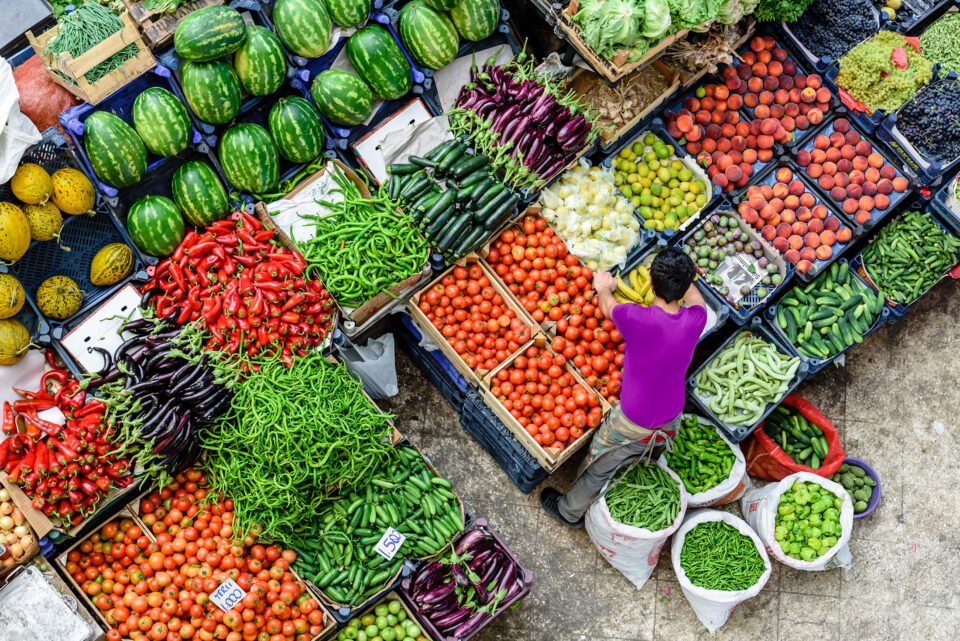We present you the second article on the Turkish fruit and vegetable business and its specifics by the FAO international consultant Fedir Rybalko. We hope that the information will help all participants in the fruit and vegetable business of our region to find new ideas for further development, while we focus on its most important link – sales. You can read the first article by Bakhtiyor Abduvokhidov here.
Recall that a group of consultants of the EastFruit project and representatives of the retail trade visited Turkey in November 2022 to exchange experience in organizing trade in fruits and vegetables.
We visited the distribution centers (DCs) of the country’s leading supermarket chains, the largest wholesale market in Istanbul, evaluated the layout, assortment, quality, and prices for vegetables and fruits in the country’s retail chains, met with the largest fruit producers and logistics companies, saw the distribution centers of large farmers and representatives of online trading.
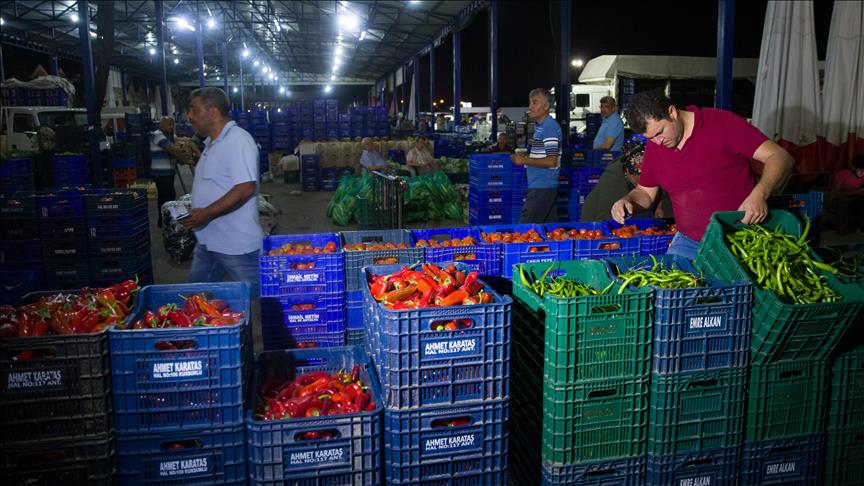
The balance between exports and the domestic market
Turkey has a large domestic market of 85 million people, with more than 15 million living in Istanbul. Therefore, despite Turkey being one of the world’s largest exporters of fruits and vegetables, the domestic market is also extremely important for it.
According to our estimates, domestic sales of vegetables and fruits in Turkey provided about $10-12 billion in revenue, and export revenue was about $6 billion in 2021. Therefore, the domestic market was no less, and even more important, than exports.
There is a similar situation only in Ukraine of the countries of our project. There is also a quite large, but not dominant, domestic market in Uzbekistan. In other countries, Georgia, Moldova, and Tajikistan, the export market is decisive for the development of the industry.
True, it should be noted that there is an active upward trend in exports in Turkey, while the volume of the domestic market is not growing much. Therefore, the importance of exports has a direct impact on the structure and state of the domestic market.
Who is the buyer of vegetables and fruits, and why is it important?
If exports are an important source of income, it is important to understand who the main buyer is and what standards are used in the key market.
Turkey has the same problem as Moldova, Georgia, Uzbekistan, and Tajikistan – the main market for fresh fruits and vegetables is the least reliable partner in the world – Russia. In addition to constant crises and unpredictable trade policies that depend on the political whims of the country’s leadership, Russia has an outdated and extremely low level of requirements for food quality and safety. On the one hand, this is good, as it allows one to sell everything and does not require large investments in production and refinement. On the other hand, focusing on such low quality standards as in Russia makes it impossible to export to other countries. And this means that the country becomes too highly dependent on an extremely unstable sales market.
We saw the results of this on the shelves of supermarkets in Istanbul – there were too many vegetables and fruits that did not meet the minimum quality standards. However, there is also the influence of the domestic market – far from all Turkish residents have a high level of income – in 2019, more than 10% of residents lived below the poverty line. Moreover, according to the World Bank, the country has seen a growing number of poor people amid high inflation and many economic disasters associated with the transition to a “manual mode” of economic management since 2019.
It is not surprising that recently Turkish farmers have started investing in variety renewal and raising product quality standards to be able to export the maximum outside our region, focusing primarily on India and Southeast Asian countries, the EU, and rich countries of the Middle East.
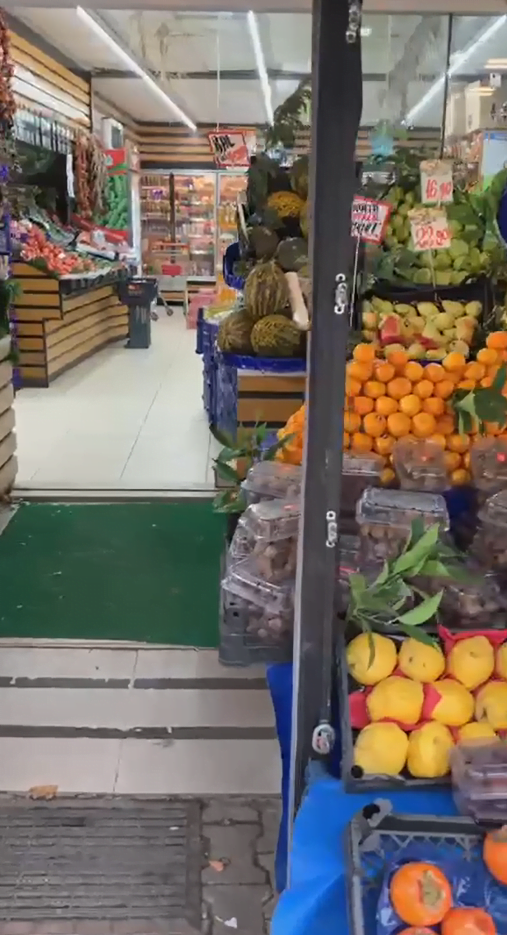
Interaction between government agencies and all participants in the fruit and vegetable market
Turkish government authorities use a very comprehensive approach when interacting with the fruit and vegetable business using tax incentives such as:
– Reduced VAT rate of 1%;
– A fee of 1% for sales in the wholesale market in Turkey, acting as a tax agent and collecting tax when the supplier enters the wholesale market. When sold bypassing the market, the tax rate increases to 2%;;
– A zero rate is applied if the market sells products certified with GAP or Organic Standard;
– Low rent in the wholesale market. The Istanbul Municipality sets rental rates for wholesale store tenants and commissioners, which are no more than $500 per month. Given that the average area of a wholesale store exceeds 50 sq. meters, the low rent is a large measure to support small and medium-sized businesses by local authorities.
– At the level of municipalities, direct subsidies are provided to producers. On the other hand, businesses have an obligation to provide important statistical information for the state at the time of the wholesale sale of fruits and vegetables, which allows the state to plan tax revenues, as well as analyze changes in market consumption and domestic production of fruits and vegetables.
– The Turkish state has created equal competitive conditions for all participants in the existing supply chain, applying, in particular, a reduced VAT rate. The use of different VAT rates for retail chains and wholesale markets, as is currently the case in Uzbekistan and Tajikistan, where retail chains pay 15% and market operators are exempt from VAT, leads to market imbalances, reducing competition. The use of different VAT rates depending on the origin of fruit and vegetables leads to negative consequences in the Georgian market – if local products are sold on the domestic market, they are not subject to VAT, and when selling imported products, the retail chain pays 18% VAT, which also reduces competition. That’s why the Turkish experience has once again proved the importance of equal tax conditions for the successful improvement of retail.
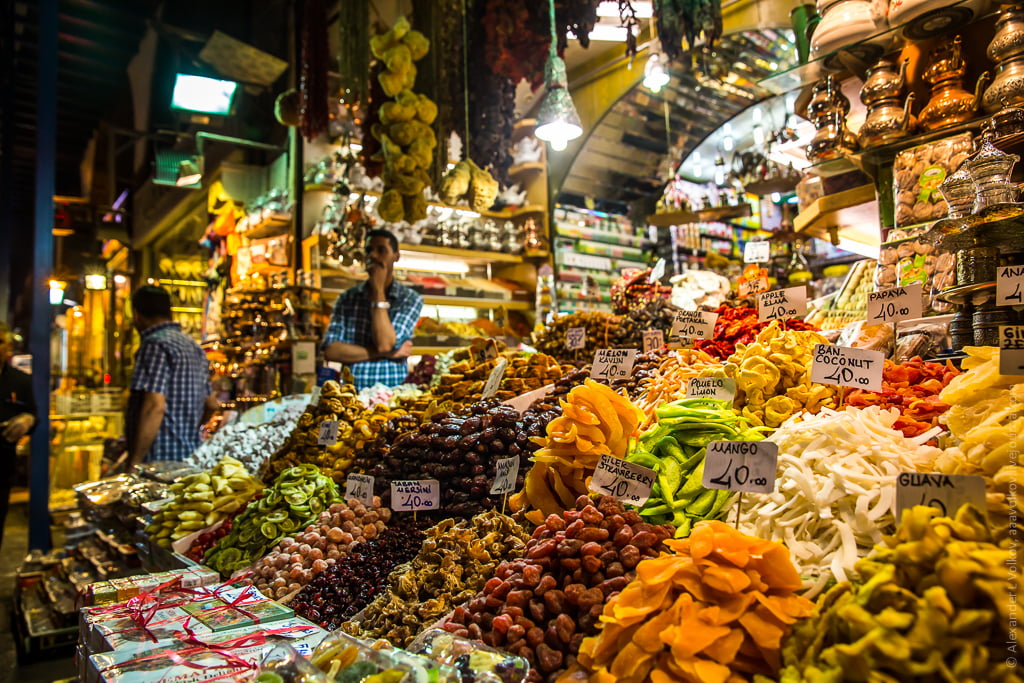
Traceability and safety of vegetables and fruit
Another important reason for creating a system for registering sales of fruits and vegetables is traceability for the purpose of state control of food safety of fruits and vegetables.
An important aspect of state regulation is ensuring temperature regimes by all participants in the fruit and vegetable business when transporting, for example, berries and mushrooms. Although other fruits and vegetables are transported and sold in wholesale markets without refrigeration, the requirement to refrigerate even a limited range is a huge step compared to current practice in the fruit and vegetable markets of the Caucasus and Central Asia, where most retailers violate the temperature regimes.
Of course, the system is not perfect, and there is a part of market consumption that is not reflected in government statistics, but the model is still more efficient than in our region. Therefore, it is advisable to study in more depth the Turkish experience to implement it in the countries of the region.
Market pricing and business financing system
The model of wholesale sales in the domestic market of Turkey allows fruit and vegetable market participants to react promptly in case of an overproduction crisis or shortage of a product. The most important element of the model is a two-level system of commission agents forming a daily wholesale price in the region of production, and in the region of consumption, increasing or decreasing it depending on supply and demand in the domestic and/or foreign markets.
According to the authorities, service commission agents charge a commission of 8-12% of sales, but farmers report higher rates. Furthermore, commission agents act as a kind of financial intermediary for producers, as it is very common for commission agents to provide financial assistance to their suppliers several months before the start of the harvest.
This model makes it possible to create a market infrastructure for a small Turkish producer that cannot independently sell his products for export or to a retail chain or cannot get a loan to replenish working capital on time. Therefore, commission agents form wholesale lots and are constantly looking for new customers, while producers focus on increasing yields and product quality, production efficiency, and safety.
The model is very relevant for all countries with small-scale production and a share of modern retail formats in the fruit and vegetable trade of less than 50%. Examples of the work of commission agents are found in the fruit and vegetable markets of the Caucasus and Central Asia. However, their influence on the market is not as large as in Turkey, as these countries are more dependent on producers in the Russian market, and the domestic market is still underdeveloped. Therefore, wholesale market operators in Georgia, Moldova, Ukraine, Uzbekistan, and Tajikistan buying products from farmers on a prepaid basis for resale often suffer losses. This affects the entire chain and its stability.
At the same time, in the Istanbul fruit and vegetable retail market, the share of modern retail formats, including online trading, exceeds 50% of all sales, so the two-tier system of commission agents will also undergo considerable changes in the next few years. Large producers will increasingly try to sell directly to retail chains, forcing out commission agents, using the mechanism of contracting the future harvest.
Wholesale markets and their role in the fruit and vegetable distribution system
The major element of the fruit and vegetable distribution system in Istanbul are two wholesale markets (one in the Asian part and one in the European part) managed by the municipality. More than 3 million tonnes of fruits and vegetables are sold annually only through one wholesale market, Bayrampasa, which we visited – this exceeds 50% of the annual consumption of the Istanbul retail market.
The share of capital wholesale markets in the countries of the Caucasus and Central Asia exceeds 80% of annual consumption, while retail chains are the most important customers in these markets. However, retail chains in Turkey try not to buy in wholesale markets. The trade margin of an unorganized retailer (seller in a bazaar, market, or street vegetable kiosk), which is the main client of the Istanbul Wholesale Market, is about 100% on average. High trade margins cover the cost of flashy merchandising, with which retailers try to attract as many customers as possible.
The average trade margin of an unorganized retail operator in the countries of the Caucasus and Central Asia does not exceed 50%. Therefore, constant monitoring of trade margins will allow retail chains in these countries to increase the economic efficiency of fruit and vegetable departments.
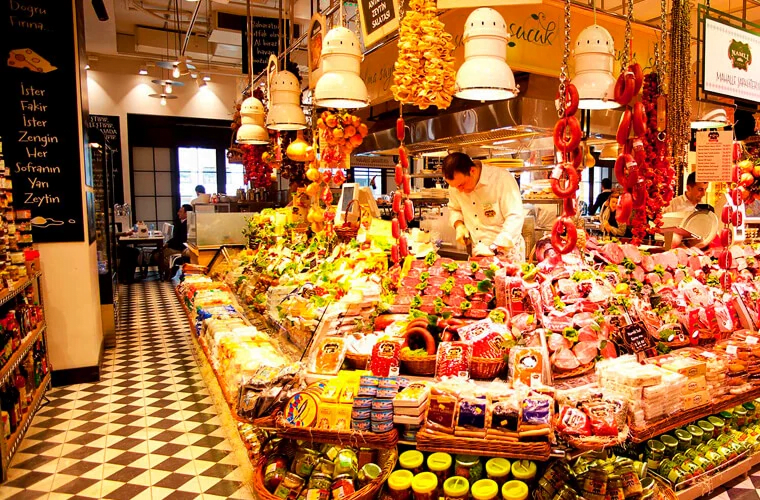
Merchandising of fruit and vegetable departments of retail chains
Despite the very high competition from non-chain fruit and vegetable retailers, all Turkish retail chains pay great attention to their fruit and vegetable departments. Fruit and vegetable departments are very often located at the entrance to the store on the street, and for many regional or local chains, this is mandatory. This allows for the expansion of the retail space, since real estate is expensive, and every meter of it must be used as efficiently as possible.
This is now actively used by unorganized fruit and vegetable retailers in Georgia, but national retail chains place their fruit and vegetable departments inside stores, missing out on an excellent opportunity to effectively use their selling space. And the weather in Georgia allows using it almost all year round.
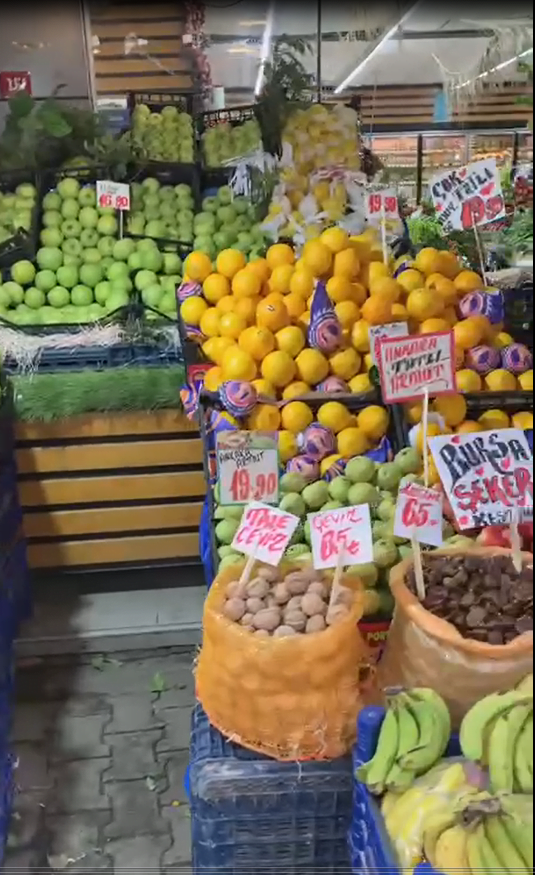
Turkish discounters have their departments inside but at the store entrance. At the same time, fruit and vegetable departments are not hemmed in by other departments. There is an excellent layout in stores of all formats.
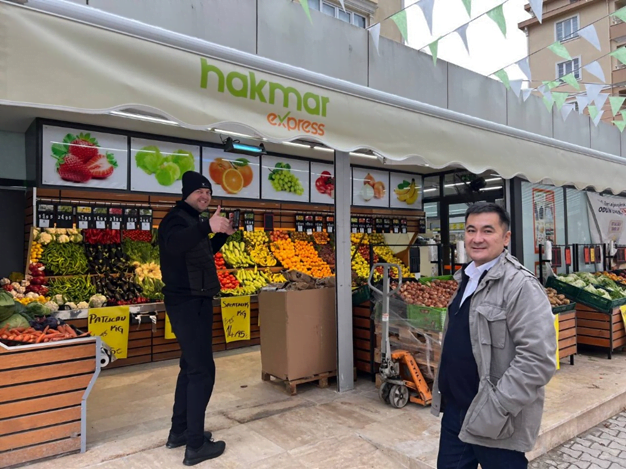
Product quality is very often average, but this is usually due to the overall goal of lowering the price perception of the produce department by lowering prices and thus increasing customer traffic. A few more reasons for this phenomenon were discussed above in the “Who is the buyer and why is it important” section.
Thanks to effective merchandising, the share of fruits and vegetables in the total sales of the best supermarket chains reaches 15%, which is big for retail chains in most EU countries. Retail technologies used by Turkish chains can and should be used in the countries of the Caucasus and Central Asia, where the share of fruit and vegetable products in the best retail chains rarely exceeds 8%.
Discounterization of Turkey
In the past 10 years, the Turkish retail market has continued to grow rapidly in the discounter segment, while other segments have maintained their positions or even declined. According to various estimates, discounters currently account for at least 70% of the organized Turkish retail market. The three biggest operators alone, BIM, A101, and SOK operate more than 20 000 stores in this market. In total, there are about 35 000 discounters in Turkey and the number of stores continues to increase annually. Having visited the stores of all three national operators of the discounter segment as part of the retail tour, we single out the following features:
– the number of fruit and vegetable SKU discounters in Turkey rarely exceeds 20;
– the fruit and vegetable department is always at the entrance, but not in front of the store outside, like most of the regional retailers they compete with;
– aggressive promotional offers of low prices are always used;
– optimization of processes in the entire supply chain, including the usage of pooling service;
– the most efficient logistics, due to delivery directly from the nearest distribution center without the use of cross-docking warehouses;
– the trade margin is 30-50% on average, excluding promotional offers.
Why are our discounters different?
In all countries of the Caucasus and Central Asia, many retail chains say they operate in the discounter format, but they very often do not comply with this format. To comply with the discounter format, retail prices in most major categories must differ from competitors of other formats by at least 20%. However, to achieve such purchasing power, it is necessary to abandon purchases in wholesale markets, developing as much as possible direct imports and contract production.
The crucial condition for the successful development of the discounter format in the countries of the region is a high level of trade margins in other retail formats, which should be more than 50%. If the level of trade margin is lower, the discounter format will not be able to compete effectively and develop quickly. And to apply such margins, it is necessary to have an appropriate income level for a significant number of consumers in a country or a particular city.
Turkish discounters achieved the stated goals thanks to efficient logistics, purchasing policy, and optimization of business. At the same time, it is very difficult for them to compete in the fruit and vegetable category, but they are trying. Therefore, the experience of developing Turkish discounters will be very relevant.
Development of E-Grocery or online sales of fruits and vegetables
The Turkish E-Grocery industry is actively developing in Istanbul and other major cities. Turkish online retail is growing rapidly. Most of the offline retailers are present in this segment, but there are a few online retailers that have managed to take a niche in the Turkish market and expand into other markets.
Although it is difficult to find a country without a rapidly growing online grocery retail after the COVID-19 pandemic, the Turkish E-Grocery market during the retail tour showed opportunities for improvement in other countries of the region, since all existing business models are represented on the market. Among them are the following:
– scheduled delivery by an online retailer from a distribution center,
– fast delivery in 15 minutes from a dark store,
– delivery from the nearest offline store,
– delivery by an online retailer from the nearest market.
While online grocery retail in the countries of Central Asia and the Caucasus is underdeveloped, not even reaching 1% of the total sales of retailers and bringing retailers only losses, the share of online orders in the total sales of retail chains in Turkey of 9% is common. This allows us to assume that this direction is profitable for Turkish offline retailers that have their own online order delivery system.
Therefore, an analysis of the business models of the Turkish E-Grocery market, especially the technical parameters of distribution centers and dark stores, will allow, for example, Georgian retailers to find the best business model to achieve high online sales rates in the next few years and become profitable. Establishing online retailers independent of existing retail operators will require significant investments, which are most likely not to pay off over a long period in countries with a small domestic market, such as Georgia and Tajikistan. But for the fast-growing retail market in Uzbekistan, most of the Turkish business models can be interesting.
Logistics – the circulatory system of the fruit and vegetable trade
The rapid growth of Turkish retail chains over the past 10 years has created a stable demand for the services of logistics providers who are trying to integrate with retail chains, fruit and vegetable suppliers, transport companies, and developers as much as possible. You can read how a logistics provider works here.
Logistics providers are constantly introducing innovations like semi-trailers used for maximum transport loading, with the ability to load pallets in 2 tiers. These semi-trailers are equipped with a moving partition to simultaneously load products with a temperature regime of both -18C and +4C into one vehicle.
Such innovations and long-term partnerships with large retail chains make it possible to increase the efficiency of the use of transport and warehouses, and, as a result, reduce the cost of logistics services for retail chains. By the way, because of the rapid growth, the chains constantly experience an acute shortage of their own vehicles and distribution warehouses.
These partnerships will also be relevant for retail chains in Uzbekistan, Georgia, and Tajikistan, which currently have a shortage of efficient distribution warehouses.
The development of pooling
The pooling service has been operating on the Turkish market for more than 20 years and has become a standard, while in our region the pooling system operates partly only in Ukraine.
Retail chains have been the main driver of pooling development in Turkey. The introduction of the service allowed retail chains to increase their competitiveness with unorganized retail, reduce mechanical damage to products throughout the supply chain, reduce the purchase price through direct purchase from producers, increase the workload and efficiency of transport, and the efficiency of using warehouse space in distribution centers and trading space in shops.
Currently, there are the following pooling business models in the Turkish market:
- international pooling operators providing services not only to retail chains but also to exporters;
- local pooling operators providing services only to retail chains;
- reusable plastic packaging, which is provided for rent by producing plants to everyone;
- reusable plastic containers that belong to the retail chain and are used by its suppliers;
- reusable plastic containers owned by suppliers of fruits and vegetables;
- local pooling operators providing a pallet rental service.
Such a variety of business models allows each operator to find a niche in the large growing Turkish market, as the distinctive feature of the Turkish market is the development of pooling services not only in retail chains but also in informal retail.
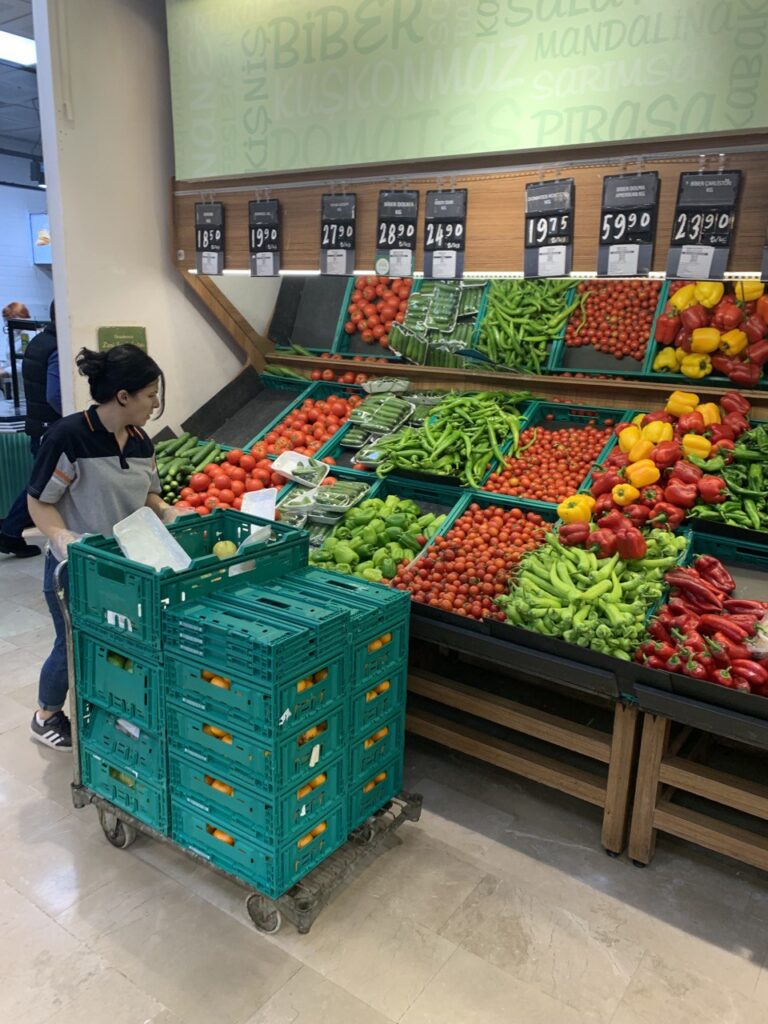
The Turkish pooling experience will undoubtedly be relevant for the countries of Central Asia and the Caucasus, where there is a need for such a service due to high losses in the fruit and vegetable supply chain and expensive transport packaging. However, the size of the market is still insufficient for international pooling operators to enter these markets. At the same time, there is now a market niche for creating local pooling services in the countries of the Caucasus and Central Asia.
The use of the site materials is free if there is a direct and open for search engines hyperlink to a specific publication of the East-Fruit.com website.




